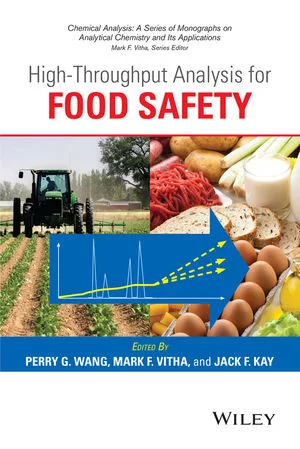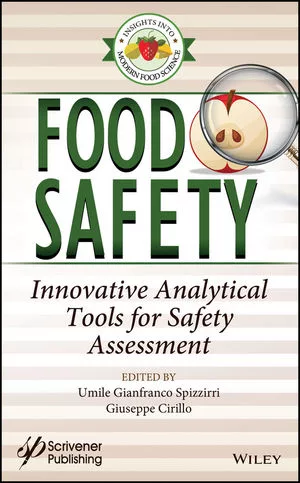Auditing Mechanics 101: A Guide for Auditors and Auditees

The food processing plant audit is not a perfect process. It can be time-consuming, stressful and frustrating, especially if a facility is dealing with a barrage of audit requests from multiple sources. But if auditors are well prepared, with the knowledge and skills to conduct a valid and productive audit, and if the auditee is prepared well in advance to provide whatever the auditor needs, the process can be relatively painless and result in valuable information that sets the stage for continuing process improvement. Knowing the basic mechanics of what constitutes a successful audit is the first step to building an effective process.
Starting with the Right Tools
Food processing plants are audited on a constant basis to ensure that food safety, Good Manufacturing Practices (GMPs), quality, sanitation and other programs are meeting internal and external standards. As part of doing business, audits are regularly required by the food company’s customers, who either hire third party auditors or provide their own audit teams to ensure the supplier meets their specifications for food safety and quality assurance process controls and methods, production capabilities, and so on. Food companies also are inspected by various state and federal regulatory agencies to ensure compliance to regulations. And, companies may also conduct frequent self audits to measure their own performance and systems capabilities. Larger companies have corporate quality staff that conduct audits to assure plants have implemented company policies and procedures.
Every auditor has the same objective—to conduct a systematic and independent evaluation to determine if activities and results comply with specified requirements, are implemented effectively and are suitable to achieve established objectives. However, depending on which auditor is coming to your plant, how they’ve been trained, what they prioritize and who they represent, there is a wide diversity in style and principle in how the audit will be performed and what criteria the processing plant needs to meet. For example, while regulatory requirements for food plant audits are relatively predictable, customer audits, third- party audits and internal audits can vary substantially, requiring plant staff to adjust processes and operations to meet the priorities of the auditor of the day. In larger plants with multiple customers and suppliers, each with a different set of criteria, this can create a chao-tic, confusing environment for plant staff and cause a loss in productivity.
In a perfect world all of these audits could be streamlined using a single industry standard or basic set of rules, enabling one auditor to collect information that would be of use to all interested parties. Plant staff would have clear and reliable guidelines to prepare for audits, and a single set of principles could dictate critical elements of food safety for food production, putting every plant and auditor on the same page. The Food Products Association is trying to create a single industry standard through its SAFE audit program. In the meantime, however, auditees need to do their best to prepare for each audit as an individual experience, and auditors should work together to assimilate similar guidelines for their own criteria, professional development and overall approach to auditing.
What Makes A Good Auditor?
There are three main elements that should be in every food plant auditor’s toolbox: qualifications and training, well-defined audit criteria and audit checklist, and good data collection, analysis and writing skills. With these three tools, auditor’s can construct a successful experience for themselves and the plant.
Qualifications. The primary cause of audit discrepancies is the disparity of qualifications and skills among auditors. Auditor training should require not only a clearly defined set of knowledge on audit principles, but also specific experience and training in the applicable product category. Without that product training, even the most skilled auditor will fall short. For example, it is very difficult when an auditor versed in meat and poultry operations is sent into an aseptic dairy operation, because their knowledge and experience with meat and poultry regulations and processing methods is not interchangeable with dairy regulations and processing criteria. Thus, consistent training and requirements for auditors to have a baseline knowledge of a facility’s production process is critical to ensuring fair and accurate audits across the industry.
Audit Criteria & Checklist. As mentioned, there can be several auditors from several different organizations conducting audits for several different reasons in a plant at any given time. With this in mind, the auditor needs to have well-defined audit criteria and a corresponding audit checklist to ensure that the audit is conducted in a timely and objective fashion. The audit criteria are usually based on regulatory requirements, industry standards, and/or customer requirements. Basic audit criteria include all of the programs and procedures that “should” and “shall” be implemented. Criteria should be shared with the plant ahead of time.
The auditor checklist is the document used to help evaluate facilities and systems to ensure compliance with program requirements. The checklist will identify relevant procedures, documents and other information to be audited. For example, a typical checklist will include whether there is a written hazard analysis for each product manufactured, whether equipment design and construction are adequate, and if environmental or other monitoring systems reflect conditions observed by the auditor. In this way, the checklist serves as a document to record audit observations so that during analysis the auditor has a good record from which to reach correct audit conclusions.
Data Collection. Data collection consists of answering questions from the audit checklist. An auditor’s skill for data collection, analysis and writing also varies among agencies and individuals, which has the potential to cause confusion for those being audited about what to provide and what to expect and thus result in an unsuccessful audit. In every audit, however, there are three common ways that auditors of all types collect objective evidence—through a visual walkthrough of the plant, by interviewing management and the employees on the floor, and through record review.
During the facility tour, auditors are expected to make observations and verify the details of the objective evidence in order to later analyze those observations to determine if there is a “finding.” Typically, during the facility walkthrough, the auditor will want to conduct the tour inside and out of the building; observe the general condition and cleanliness of the facility and equipment; observe personnel practices; and verify processing steps. Again, it is important to remember that objective evidence is “qualitative or quantitative information, records or statements of fact…which are based on observation, measurement, or test and which can be verified” (ANSI/ISO/ASQC). At the end of the audit, evidence gathered must be sufficient to support conclusions drawn by the auditor, as well as by others.
Remember, the findings are usually classified as deviations, deficiencies and/or nonconformities that will require corrective actions by the auditee. For example, if the plant’s written master cleaning program requires overheads to be cleaned monthly, and the auditor observes during the walkthrough that the overheads are dirty, the next step is to look at monitoring records to see when they were last cleaned. If the record shows that cleaning has not been conducted for three months, the observation is verified and noted on the audit checklist.
The next item in the auditor’s data collection toolbox is the interview of production staff and management. It is also a good idea to interview relief operators and other “pinch-hitters,” who may not be in the plant everyday but who have critical tasks. Paramount to the outcome of the audit are the auditor’s interviewing skills. If the skills are good, the auditor will be able to obtain information on actual practices, rather than text from a manual that may or may not actually translate to real-world practices.
Unfortunately, there are still auditors from the old school who believe that the audit is a “gotcha!” However, a more encouraging, supportive style that fosters trust generally yields better results. To gather the information necessary to make an informed report, auditors have to be courteous and polite and encourage the communication of information. Using an open-ended questioning technique—“Tell me how you do this,” or “What if “X” happens during a shift? Can you explain what you do?”—is far more effective in yielding information than a “yes or no” format, such as “Is your critical limit 161F for 15 seconds?” or “You send product that deviates from your critical limit to waste, don’t you?” And after you’ve asked the auditee the question, listen.
Upon the completion of the plant tour, the auditor conducts a record review to assess how consistently and effectively the plant is implementing its programs. Record review involves looking at the processor’s written programs, monitoring records, corrective action records, Hazard Analysis and Critical Control Points (HACCP) plans, and other relevant records. A thorough record review will provide the auditor with a way to compare what is expected with his or her collected observations on how the plant is actually implementing and monitoring established procedures.
The selection of records is key to ensuring an effective record review process. First, the auditor should make sure that the records are requested well before the audit; ideally, providing a list to the plant specifying the types of records with date or shift parameters. This helps to keep the process moving once the audit is underway. By considering the records needed for review ahead of time, the auditee is able to have the records available and organized, versus wasting valuable time running back and forth to retrieve records from numerous locations, such as from the lab, maintenance, sanitation and production. There are some good rules of thumb for the selection of records:
• Determine the number of production days since the last audit. This helps the auditor hone in on the most recent documentation and narrow down the number of records that need to be pulled.
• Vary the dates of the records so they are distributed over the entire time of production, rather than allowing records from only one day to represent the entire audit.
• Try to include records from worst-case scenario days, such as right after a seasonal shut-down period or during holiday production when everyone is running high volumes. It is more likely that the auditor will see recordkeeping errors during peak production times, long shifts, overtime, or during holidays or weekends (and the day after).
Analyzing & Reporting: Got Perspective?
Once auditors collect all of the necessary information through the three different methods of data collection, they have to analyze their observations and determine the significance of their findings. It may be easy for auditors to collect the data, but it can be difficult to analyze their significance. First, auditors must make sure they have all the facts, and avoid making judgments based on assumption. Sometimes problems occur when auditors do their analyses in a vacuum instead of reaching out to a supervisor, another auditor or expert to find out if something really is an issue. Auditors should not be afraid to use that sanity check.
Once auditors complete the analysis, they write down their initial findings and communicate those findings to the plantpersonnel, explaining any deviations, deficiencies or nonconformities that will require corrections. An auditor should never leave a facility without first sitting down with plant management to make sure they understand the significance of the findings. During this final review the plant is provided the opportunity to clarify any auditor misunderstandings and provide additional data, if needed.
It is also important for the auditor to explain what is going to happen next—that the observations have been noted and the final report will be written, identifying any deficiencies, deviations or nonconformities; that the report will be sent back to the plant management requesting them to respond with their corrections and timelines to the auditor within a defined period of time.
During this conversation, and later in the final report, a good auditor will point out the positive and negative aspects of their findings. It is not constructive to point out only faults, and by pointing out what the plant staff is doing well helps them maintain their commitment to the practices that are working. Whenever appropriate, for example, it is a good approach for the auditor to point out what he or she considers a best practice in the plant.
Final reports must be delivered promptly, especially if they include significant issues that need to be addressed. When an audit report arrives weeks after the audit, it sends the message that the audit and audit findings must not have been that critical.
The style and approach of the final report is also important. Be clear and concise writing observations and support those observations with objective evidence. Auditors should avoid writing the report in a manner that tells the facility management how to do or correct something. Rather, the auditor should simply state the deficiency, allowing the facility to determine how to correct the deficiency. For example, one auditor may state, “The facility must install a metal detector” whereas another auditor may state, “Programs are not in place to prevent or detect metal contamination.” This latter statement allows the facility to determine how to best manage metal contamination.
The report should also be as specific as possible, and the writer should avoid vague adjectives, such as “several,” “many,” or “few.” Whenever possible, use specific quantities to define expectations or issues, so people understand whether it is significant or not and what exactly they need to do to address the problem.
Tools for the Auditee
Plant management and staff can do a lot to make sure the audit process goes as smoothly as possible. The success of an auditing experience relies largely on how much preparation the auditee does before the auditor arrives. To ensure the greatest likelihood for a positive experience, the auditee should understand up front what the auditor expects and be ready to provide the materials, people and plant access to the auditor as they are needed. Lack of advance preparation can turn a four-hour process into a 16-hour marathon, largely because the plant is not able to provide quickly the people and records necessary and must locate them before the audit can proceed. This results in a frustrated auditor and a chaotic environment, which is not the ideal setting for this important process.
Well before the auditor is due to arrive, find out what the audit criteria will be, what the auditor will look for while collecting data, and what the facility is expected to provide. As part of the data collection process, the auditor will typically want a facility tour, inside and out, to observe the facility structure, personnel practices, cleanliness of facility and so on. The auditor will also want to interview production staff and management. A good auditor will not only ask questions of the people who are there every day, but also those who are the pinch-hitters, the relief operators. Keep in mind that when auditors interview personnel they are obtaining information on actual practices, not just on what is written in the manual.
Prepare for this data collection process by requesting a copy of the auditor’s audit plan. This would include the scope of the audit–for example, will they be looking at all production lines or just specific products? Request a list from the auditor of the personnel who are to be interviewed, as well as an audit schedule specifying the times that each staff member—usually the maintenance manager, the production supervisor, the sanitation manager and the quality manager—will need to present during the audit. Also, request a detailed list of the documents the auditor will want to review and have them organized and available when the auditor arrives. For the record review process, ask for guidance on which dates or time periods the auditor would like to review. It is likely that they will want to see records from peak periods and overtime shifts, so be prepared to present those.
Geared for Success
Auditors who are well-trained and qualified, know the audit criteria and conscientiously collect objective evidence using skilled observation techniques, courteous interviewing methods, and focused record reviews, will set the foundation of audit success. It’s important that both auditees and auditors stay focused on the goal of auditing: To obtain (or provide) an independent assessment of the facility’s food safety, sanitation, quality assurance and process control programs to ensure adequate implementation and compliance to achieve established objectives. Ultimately, the benefit of this evaluation is that it raises the bar of excellence, not just for the facility being audited, but for the industry as a whole. The opportunity for continual improvement makes us all better at what we do.
Kathy L. Gombas is the Director of Quality Assurance for Dean Foods in the Northeast, overseeing quality and food safety programs, regulatory affairs and corporate auditing for 15 fluid dairy, juice and bottled water processing facilities. Prior to joining Dean Foods, Kathy worked at the U.S. Food and Drug Administration’s Center for Food Safety and Applied Nutrition (FDA CFSAN) as the Deputy Director for the Division of Hazard Analysis Critical Control Point (HACCP) Programs. During her three years at FDA, Kathy led several of the agency’s HACCP and food allergen initiatives, including policy development and regulator training.
Prior to joining FDA, Kathy spent eight years developing and conducting food safety systems for Kraft Foods Worldwide. Kathy is a member of the National Conference on Interstate Milk Shippers (NCIMS) HACCP Implementation Committee, and chair of the NCIMS HACCP training subcommittee, which provides auditor training to state regulators and industry.
Looking for quick answers on food safety topics?
Try Ask FSM, our new smart AI search tool.
Ask FSM →








